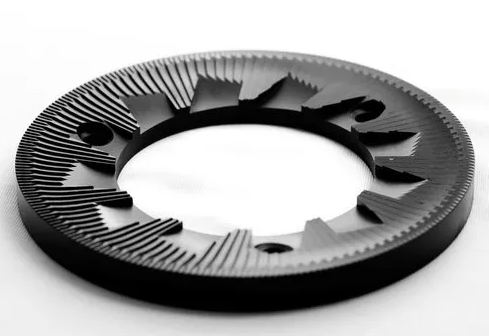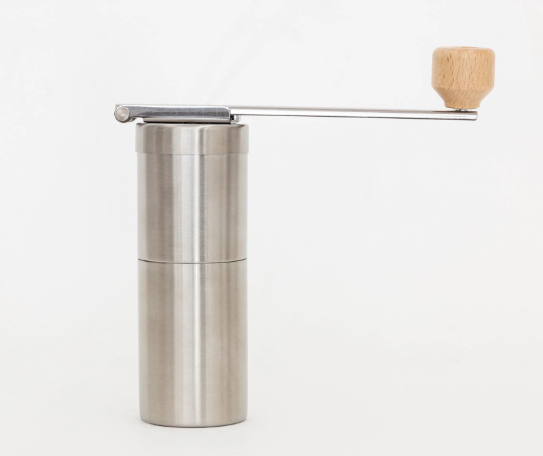To expand your news reach, consider advertising with our media partner, Patch Media, at https://heypapipromotionsmedia.town.news/. Patch is a nationwide news network comprising over 1,000 hyperlocal websites dedicated to community news across the United States. For press release distribution services, please call or visit https://heypapipromotions.com/advertise.
What materials are commonly used in the construction of stepless hand grinders, and how do they contribute to durability and performance?
The construction of stepless hand grinders involves a thoughtful selection of materials to ensure both durability and optimal performance. Here MANGOL will share the common materials employed in the crafting of these precision instruments and examine how they contribute to the longevity and functionality of stepless hand grinders.
1. Burr Material:
Common Materials: The burrs, responsible for grinding coffee beans, are often made from stainless steel or ceramic.
Contribution to Durability: Stainless steel burrs are favored for their robustness and resistance to wear. Ceramic burrs, on the other hand, are known for their durability and ability to retain sharpness over time.
Impact on Performance: The choice between stainless steel and ceramic burrs can influence the grinder's performance characteristics, including grind consistency and heat management.
2. Adjustment Mechanism:
Common Materials: The adjustment mechanism, which allows users to set the grind size, often involves components made from metals like brass or aluminum.
Contribution to Durability: Brass is frequently used due to its durability, corrosion resistance, and smooth operation. Aluminum is chosen for its lightweight properties and ease of machining.
Impact on Performance: The choice of materials in the adjustment mechanism can affect the precision and smoothness of grind size adjustments. A well-crafted mechanism contributes to ease of use and long-term reliability.
3. Grinder Body:
Common Materials: The external body of stepless hand grinders is commonly constructed from materials like stainless steel, aluminum, or high-quality plastics.
Contribution to Durability: Stainless steel offers durability, corrosion resistance, and a premium aesthetic. Aluminum is prized for being lightweight yet robust, while high-quality plastics are chosen for their durability and cost-effectiveness.
Impact on Performance: The material of the grinder body influences the overall weight, portability, and ease of maintenance. Stainless steel, for example, adds heft and stability, contributing to a solid grinding experience.
4. Motor Components:
Common Materials: Motors within stepless hand grinders can have components made from copper, steel, or other alloys.
Contribution to Durability: Copper is often preferred for its conductivity and heat dissipation properties. High-quality steel or alloy components contribute to the motor's durability and efficiency.
Impact on Performance: The materials used in the motor components play a crucial role in determining the grinder's power, efficiency, and ability to handle extended grinding sessions without overheating.
5. Hopper and Container:
Common Materials: Hoppers and containers for coffee beans are typically made from materials like clear plastic, glass, or stainless steel.
Contribution to Durability: Stainless steel provides durability and protection from light exposure, which can affect the freshness of the coffee beans. Clear plastics or glass, when appropriately treated, offer visibility and ease of cleaning.
Impact on Performance: The choice of materials for the hopper and container influences the cleanliness, hygiene, and overall aesthetics of the grinder. Stainless steel, in particular, contributes to a sleek and modern appearance.
The careful selection of materials in the construction of stepless hand grinders is a key determinant of their durability, performance, and overall user experience. From burrs to motor components, each material is chosen with precision to contribute to the longevity and functionality of these essential tools for coffee enthusiasts. As coffee brewing becomes both an art and a science, the craftsmanship and material choices in stepless hand grinders play a crucial role in elevating the grind precision and quality of the final brew.
What features distinguish a stepless burr grinder from stepped grinders, and how do these features impact grind precision?
The choice between stepless and stepped burr grinders can significantly influence the precision and control one has over the grind size. Now MANGOL will share the distinctive features of stepless burr grinders and delve into how these attributes impact the precision of the grinding process.
1. Continuous Adjustment:
Stepless Burr Grinders: One of the defining features is the absence of pre-defined grind settings. Stepless grinders allow for infinite and continuous adjustments, providing unparalleled control over the grind size. Users can fine-tune the settings to achieve the exact coarseness or fineness desired.
Stepped Grinders: In contrast, stepped grinders offer a limited number of preset grind settings. Users can only choose from a set number of options, which may result in a lack of granularity when searching for the perfect grind size.
2. Infinite Grind Size Possibilities:
Stepless Burr Grinders: With no fixed increments, stepless grinders offer an infinite spectrum of grind sizes. This flexibility is particularly advantageous for users who seek precise adjustments, especially when exploring various coffee brewing methods that demand specific grind coarseness or fineness.
Stepped Grinders: Stepped grinders, while convenient for some users, may fall short when trying to achieve the exact grind size required for certain specialty coffee preparations. The limited number of steps can result in compromises when seeking optimal extraction.
3. Enhanced Consistency:
Stepless Burr Grinders: The continuous adjustment feature of stepless grinders contributes to enhanced grind consistency. Users can dial in the grind size with precision, reducing the likelihood of over-extraction or under-extraction. This is particularly crucial for espresso brewing, where small adjustments can significantly impact flavor extraction.
Stepped Grinders: Stepped grinders, due to their preset grind settings, may exhibit limitations in achieving consistent results across all brewing methods. Users may find it challenging to land on the perfect grind size, especially if the desired setting falls between two predefined steps.
4. Adaptability Across Brewing Methods:
Stepless Burr Grinders: The adaptability of stepless grinders makes them versatile across a wide range of brewing methods. From French press to espresso, users can precisely adjust the grind size to match the requirements of each brewing style.
Stepped Grinders: While stepped grinders can perform well within the parameters of their preset grind settings, they may lack the finesse needed for certain methods that demand specific adjustments outside of the available steps.
5. Learning Curve:
Stepless Burr Grinders: Embracing a stepless grinder requires a learning curve as users familiarize themselves with the nuanced adjustments. However, this learning process can empower users with a deeper understanding of grind size impact on flavor profiles.
Stepped Grinders: Stepped grinders, with their predefined settings, offer a simpler learning curve. Users can select from available steps without the need for fine-tuning, making them more accessible for those who prefer a straightforward approach.
The features that set stepless burr grinders apart—continuous adjustment, infinite grind possibilities, enhanced consistency, adaptability, and a learning curve—culminate in a tool that grants coffee enthusiasts unparalleled control over their grind. While both stepped and stepless grinders have their merits, the precision and flexibility offered by stepless burr grinders make them an enticing choice for those who appreciate the art and science of coffee brewing.


Comments